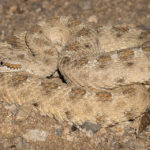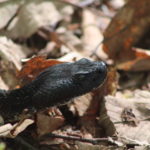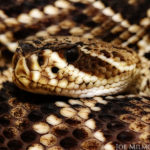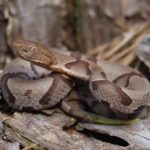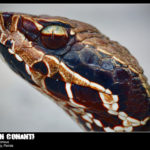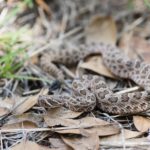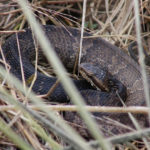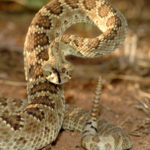
Crotalus scutulatus, AKA the Mojave Rattlesnake, is a pit viper known for its particularly powerful neurotoxic-hemotoxic venom, one of the most potent in the world. The Mojave Rattlesnake can be found in the arid desert regions of the Southwestern United States and Northern to Central Mexico. A common nickname for these snakes is “Mojave Green”,Read More
